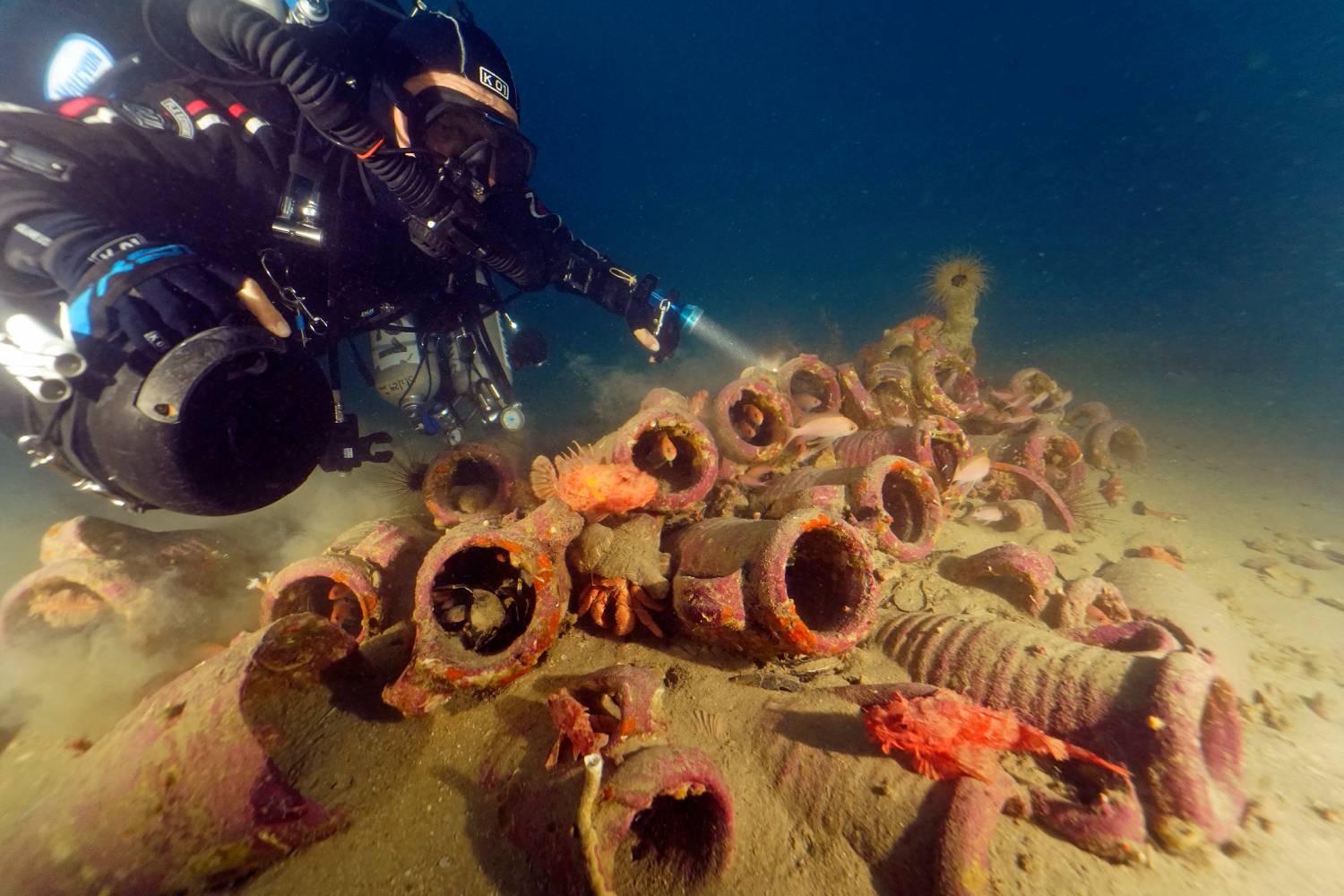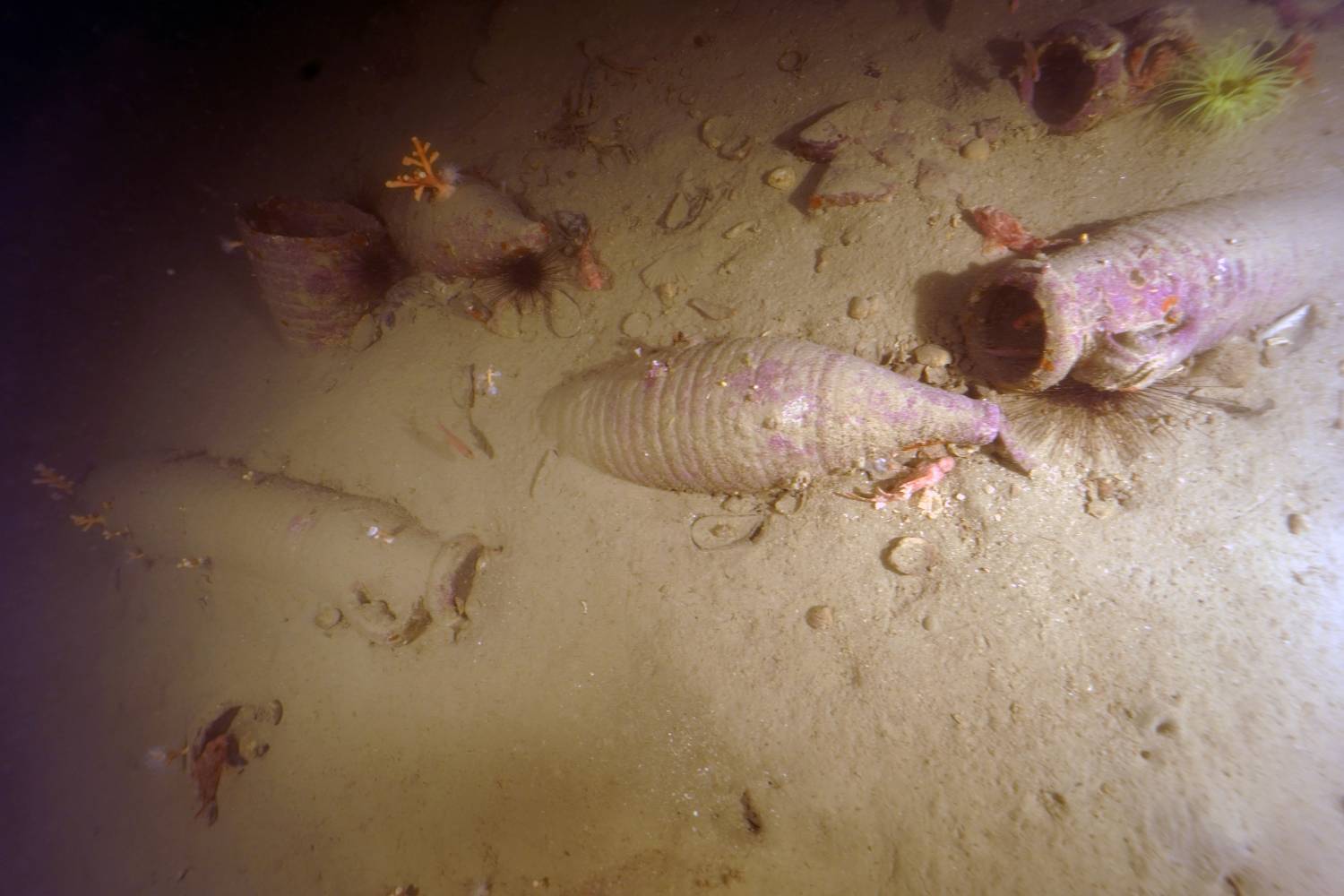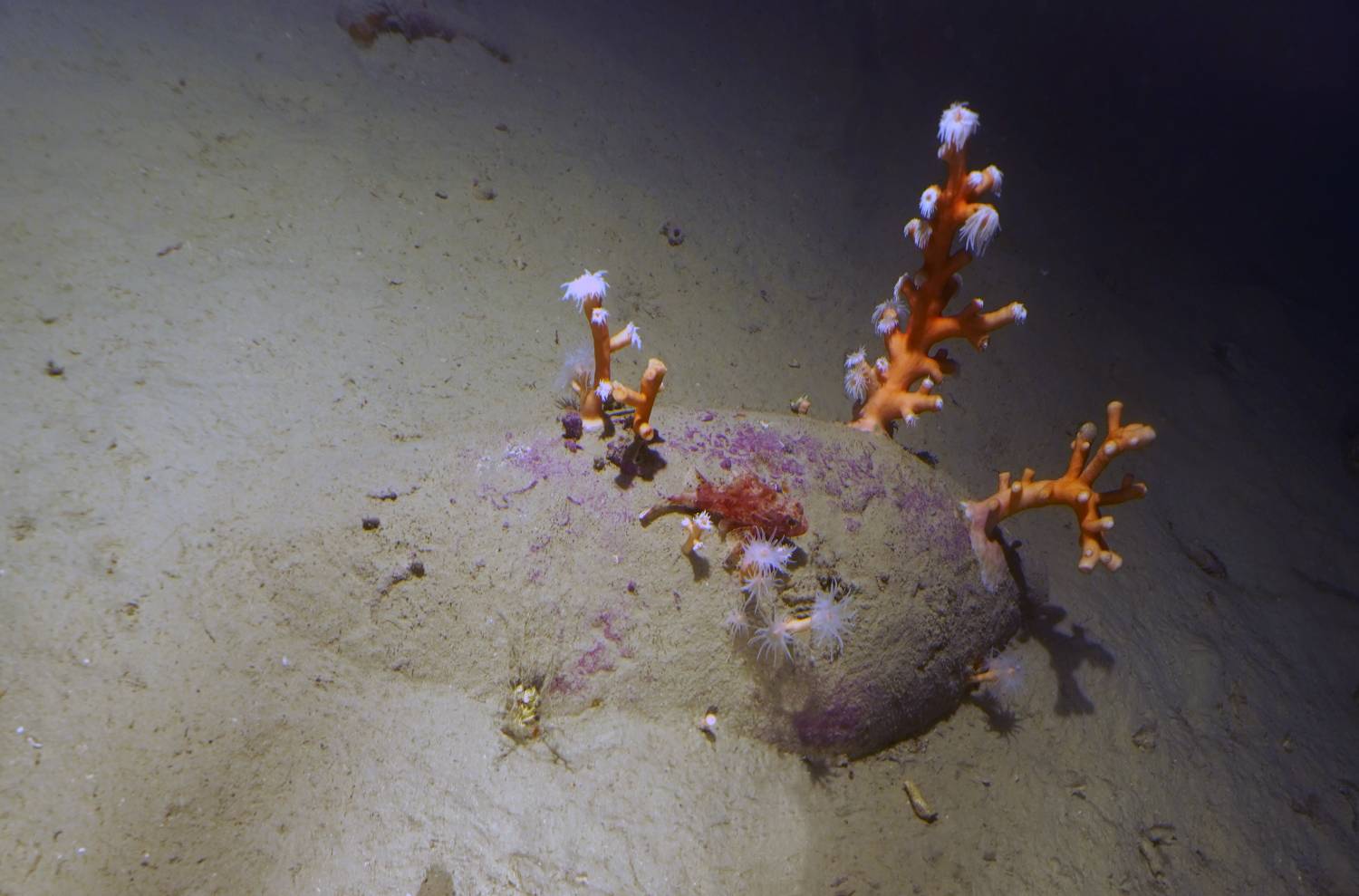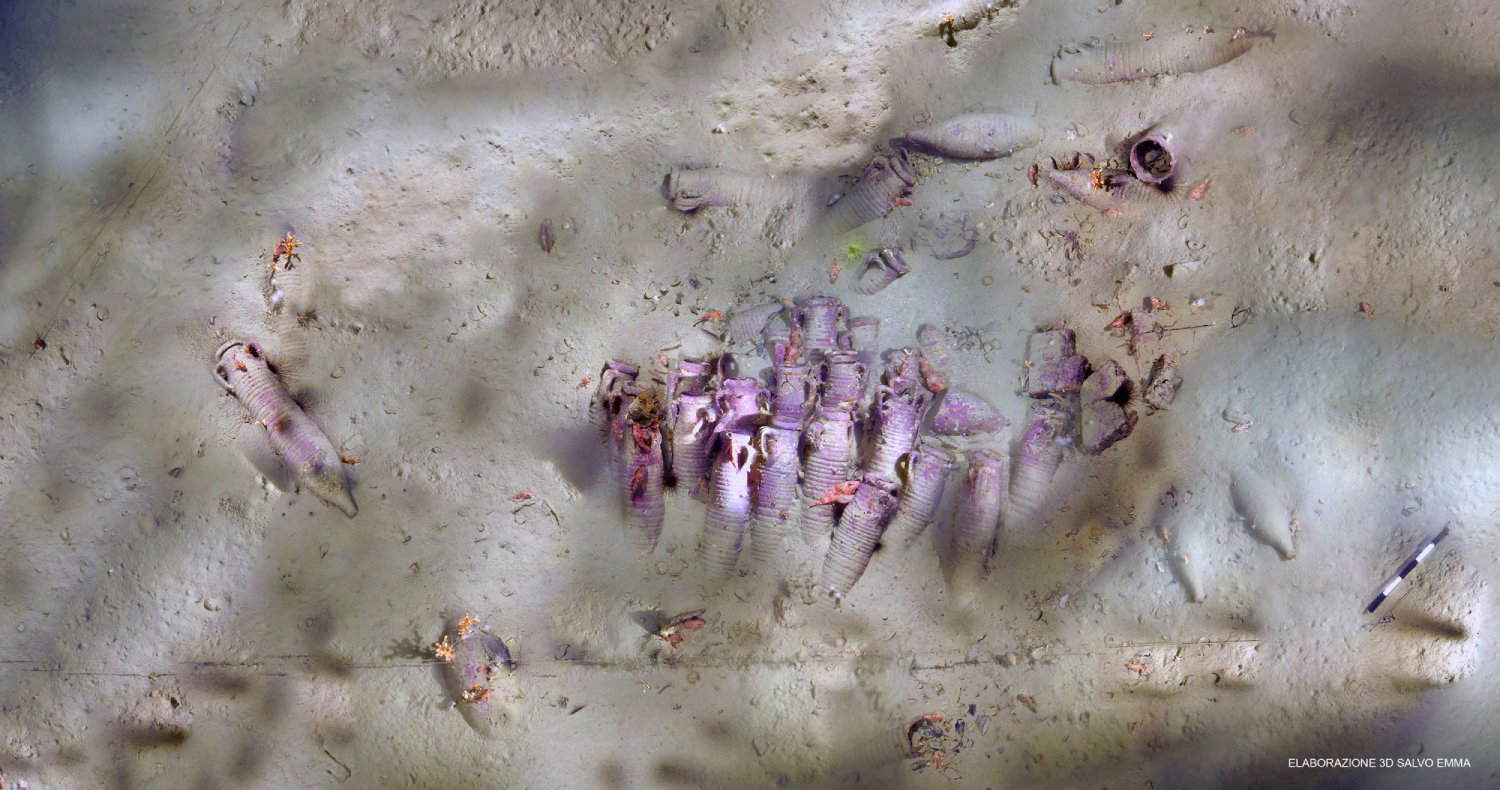In Sicily, in the waters of the Vendicari Nature Reserve, along the coast between Marina di Noto and the protected area, a discovery of great archaeological significance has been made: some 40 ancient amphorae dating from the first century B.C. to the first century A.D. have been spotted at a depth of about 70 meters and about three miles from the coast. The ancient containers, of the “Richborough 527” type, are still found lined up in their original stowage position, as if they were ready to transport goods by sea.
The discovery came about thanks to a three-dimensional photogrammetric survey, an advanced underwater documentation technique carried out by the Sicilian Region’s Superintendence of the Sea, in collaboration with the Capo Murro Diving Center in Syracuse. Thanks to this technological tool, it was possible to explore in detail and document the submerged area where the amphorae have been lying for millennia, allowing the archaeological site to be virtually reconstructed for future analysis.


The important discovery of these amphorae is part of an investigation that began in January 2022, when two fishermen from Avola reported the presence of a wreck in the area to the Superintendence. Their indication prompted archaeologists to plan an investigation of the marine site, from which emerged the importance of the finds stored among the reserve’s seabed. Unlike other underwater archaeological areas in Sicily, where numerous Roman artifacts have already been identified, the site between Noto and Vendicari had never been explored in depth until now.
The investigation led to the discovery of “Richborough 527” type amphorae, a category of ceramic vessels found historically in several locations in the Mediterranean basin, but for these specific amphorae they are documented mainly in southern England and the Aeolian Islands. Their presence in a submerged wreck in Sicily could prove of great interest to historians and archaeologists, who are now working to establish more precisely the origin and contents of these amphorae.


One of the goals of upcoming research will be to determine whether the amphorae found at Vendicari are of the same type as those found in the 1990s on the island of Lipari, which were related to the transport of alum. Alum is a mineral widely used in antiquity for tanning hides and dyeing textiles, and its extraction was common in the ancient Mediterranean, an area that served as a hub for trade and exchange of valuable goods in Roman times.
If the new discovery confirms the link to the alum trade, the amphorae found could be direct evidence of the trade routes that connected Sicily to other Mediterranean regions. This find could add new information to current knowledge about Roman sea routes, suggesting a link between Sicily and the market for the precious mineral.
“These are rather rare amphorae,” said Regional Councillor for Cultural Heritage Francesco Paolo Scarpinato, “whose discovery represents a unique opportunity to further study both the cargo and the wreck. This discovery will allow us to gain new information about ancient trade routes and the trafficking of precious goods in the Mediterranean.”
 |
| Sicily, ancient Roman amphorae found in the sea between Marina di Noto and Vendicari |
Warning: the translation into English of the original Italian article was created using automatic tools. We undertake to review all articles, but we do not guarantee the total absence of inaccuracies in the translation due to the program. You can find the original by clicking on the ITA button. If you find any mistake,please contact us.